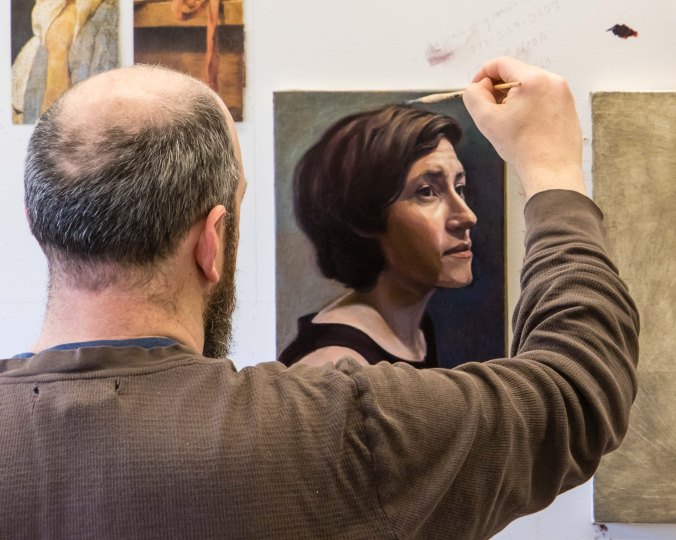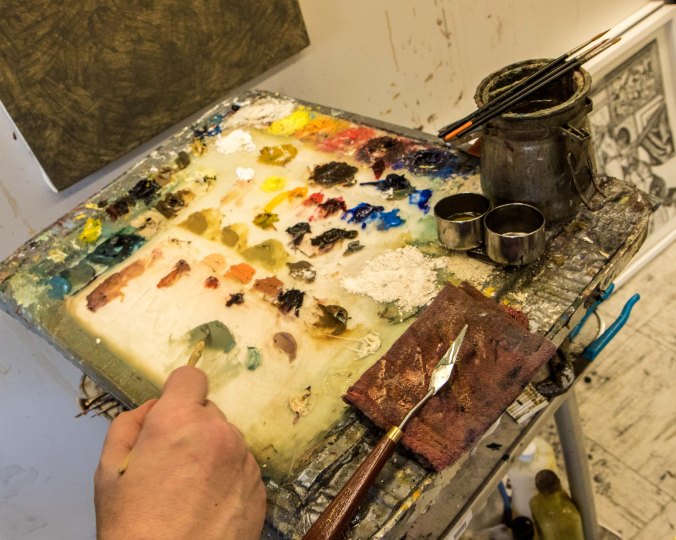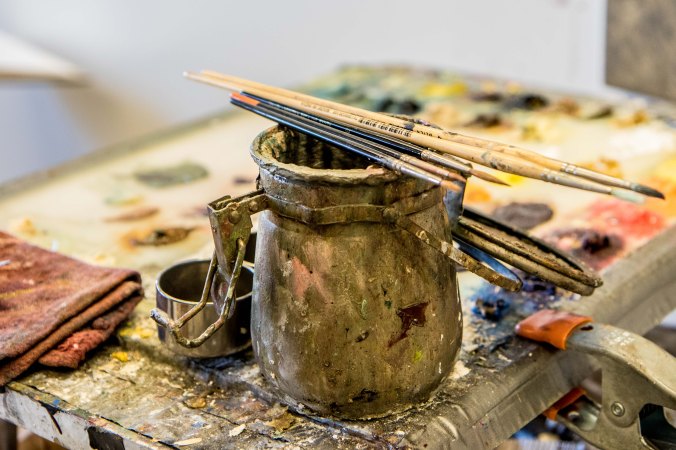
I visited Jeremy Long in his studio in the Creative Arts Center at Wright State University.

As I entered, I saw that Jeremy was working on a small painting of his wife, artist Colleen Kelsey.

I asked about two photos placed on the wall to the left of his painting of Colleen, where Jeremy could see them as he painted. “Those photos show details of a piece by the 18th century painter Jean-Baptiste-Simeon Chardin,” Jeremy told me. “He was able to create remarkably life-like textures in his paintings. I like to look at his work as I paint just to remind myself of what is possible if I get everything right.”
I noticed another painting of Jeremy’s wife on the floor.

“That painting is how I managed to first get to know my wife,” Jeremy explained. “We were both at the Chautauqua School of Art that summer. I asked her to pose for me, and after a few sittings we started to date. I never did finish that piece, but Colleen and our children appear in most of my large works.”
I knew that Jeremy was best known for his large paintings (typically 6 foot by 8 foot) which include members of his family. I asked how long these works take. In place of a direct answer Jeremy suggested I look at the painting below as he walked me through some of the steps.

Jeremy told me he started painting on a smaller canvas, possibly 3 feet by 4 feet like this one. First he paints something abstract, in this case just three bands of color. Then he adds complexity to the abstract work. Next he tries adding figures in various configurations in ways that fit his original abstract design. He also tries out various ways of getting the viewer to look intently at the piece, like the way one of the arms he has drawn on the left might belong to either of two figures. He changes all or part of the composition many times, until this small canvas has numerous layers of paint and Jeremy has a design to use on the large canvas.

Painting the large canvas is also time consuming because Jeremy does indirect painting. That is, he builds the final image by painting several layers of paint, one over another. The upper layers modify, but don’t completely conceal, the lower layers.
A poster I saw in Jeremy’s office came from a show he recently had at the Bowery Gallery in New York. The poster featured one of Jeremy’s large paintings.

I told Jeremy that I thought he had only one son, but the painting showed two young boys. “I added a son for compositional purposes,” he explained.
Jeremy said a retired gentleman came to the Bowery Gallery show because he was drawn (as I was) to the painting on the poster. The man had never purchased any art before, but he bought Jeremy’s painting and found a space to hang the 6 foot by 8 foot piece in his small New York apartment. The man lives alone, but now he shares his small space with a wonderful work of art and with an image of Jeremy’s family. Somehow that makes all of the time Jeremy put into that painting worthwhile.
I asked Jeremy to pose for a quick portrait.

Then I left and Jeremy returned to the painting of his wife.

